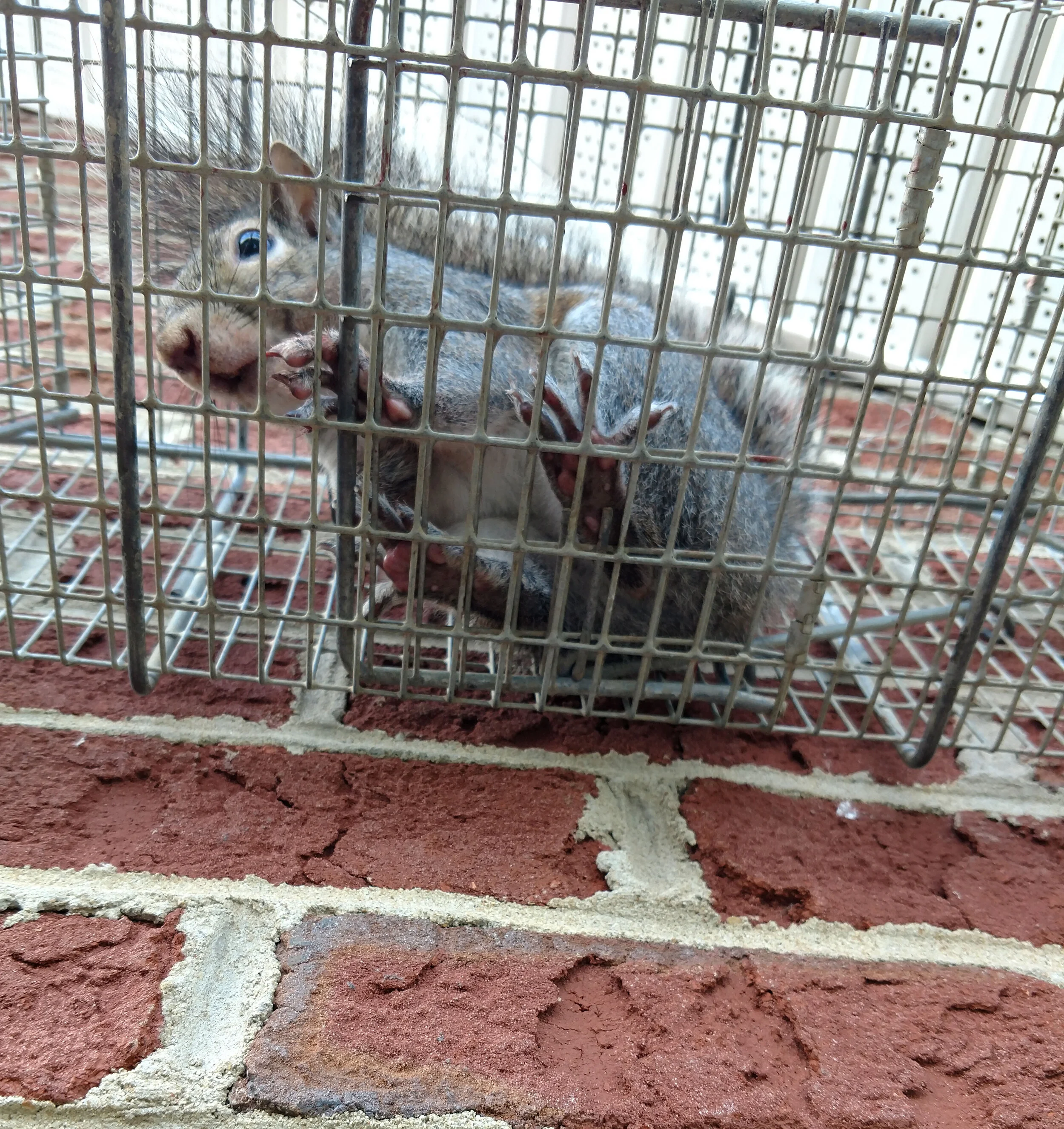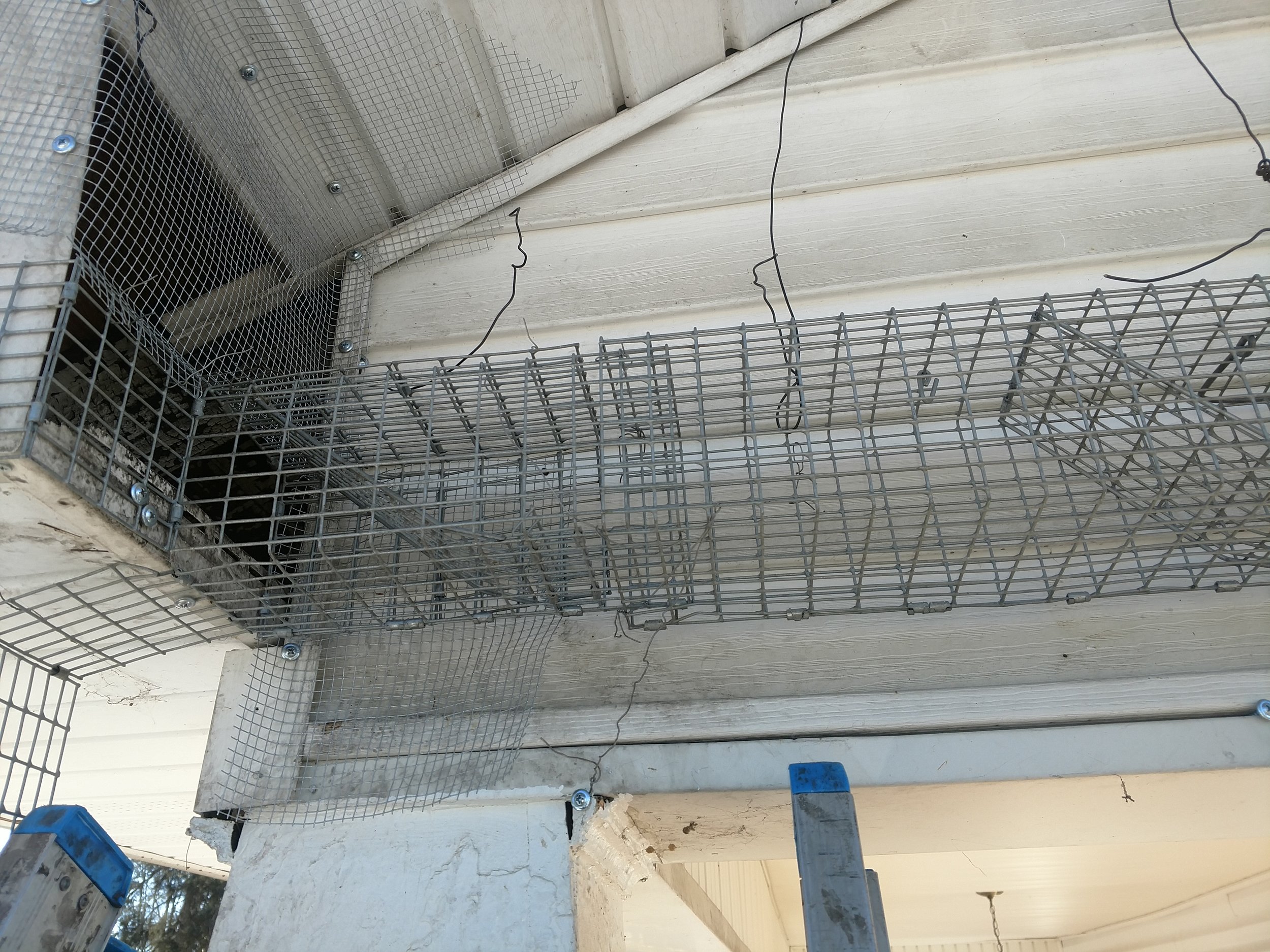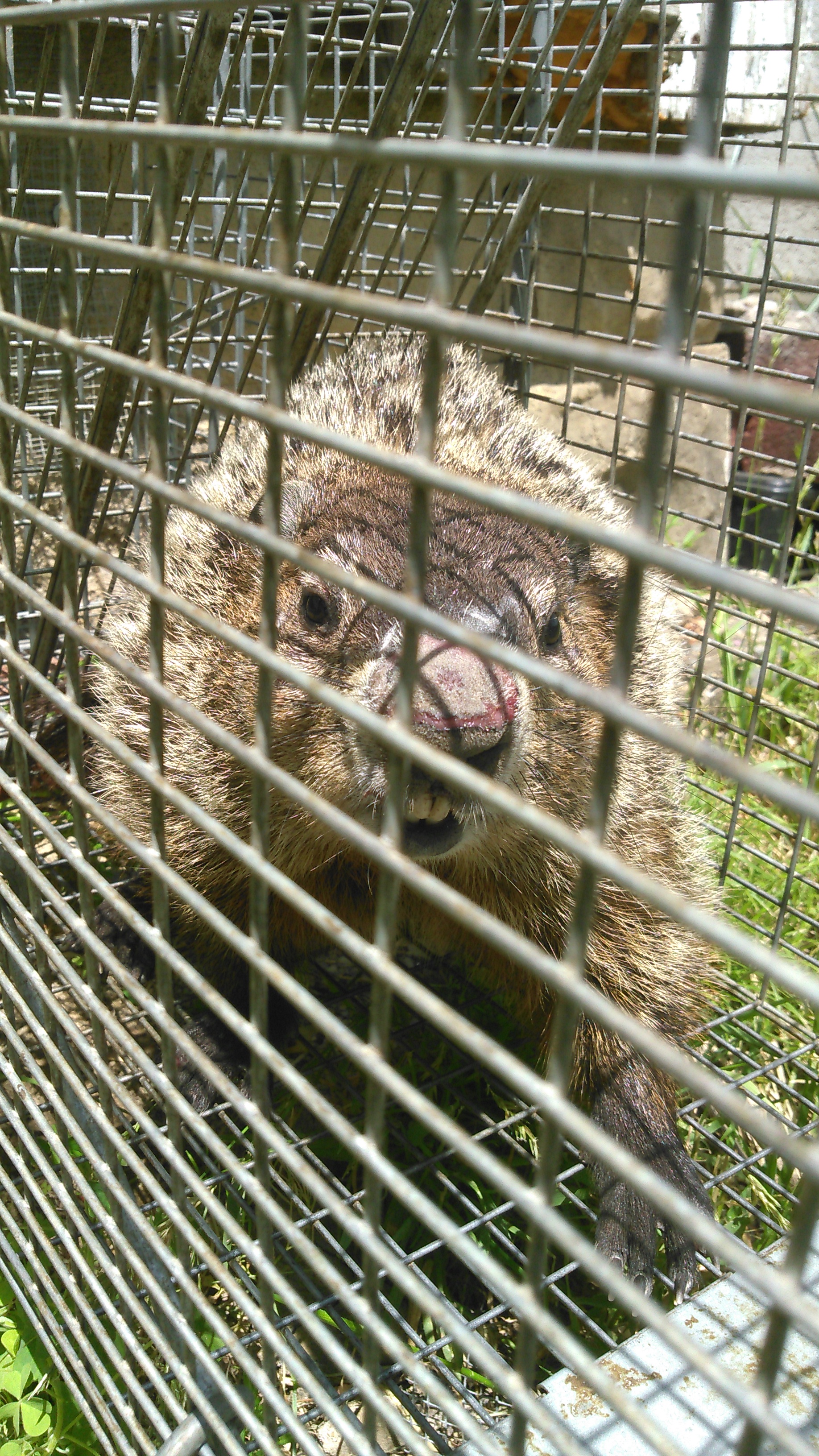Serving Bristol, Kingsport, and Johnson City areas
How to Get Squirrels out of Attics
This video details how squirrels are removed from attics and was shot in Bristol, Tn. Always remember that the entrance has to be closed and that getting the squirrel out is only half the job.
When we meet our new clients here in the tri-cities, the first thing on their mind is “How do we get the squirrels out of the attic?” The secret to success is to make a choreographed effort to get all the squirrels out of your home while sealing it up. Doing one and not the other will either leave you with desperate squirrels trapped in the attic frantically trying to chew their way out or a vacant nest site that will be taken up (sometimes only days later) by the next squirrel.
Holes in fascia board on home in Piney Flats chewed through by Squirrels.
First thing to do - Find all the Entrances
First, we make a thorough search of the home to locate all the entrances. Squirrels maintain more than one entrance to a home if at all possible. I have seen homes that had in excess of 10 entrances. All these entrances must be sealed to have success. Leaving just one entrance will guarantee reinvasion. Often you “chase” squirrels from one entrance to another as you go through the sealing-up process. I often tell customers that the job is only finished when you find the last hole. The squirrel’s ability to reach the highest, steepest part of your home makes this task difficult, dangerous, and time consuming. Experience and intuition can go a long way in shortening this process.
Second - Is it nesting season
A really important thing to consider is if it is nesting season. Traps and one way doors are really great at getting momma squirrel out, but they do nothing to remove baby squirrels that are still in the nest. If there is a chance that you have baby squirrels in the attic, you will need to have a plan to get them out beforehand. There might be a chance that you can just walk into the attic and pick them up, but usually this is not an option. Momma squirrel is way smaller than any human I know and can squeeze into places that I can’t. There is a pretty good chance that you won’t even know where the babies are. Leaving them behind means a nest of dying rotting babies that may stink for a couple of weeks. If the babies are pretty well developed this can mean a terrible stench can follow and you will have dead baby squirrel mummies permanently in your attic.
The alternative -an Eviction Treatment
To convince momma squirrel to move out and take the babies with her, I use what I call my eviction treatment. I use a combination of flashing lights, predator smell, and other techniques (depending on the situation) to convince momma squirrel that her babies are in danger and that she should move them. Squirrels do this all the time in the wild.
There are several variables involved and eviction is not quite one hundred percent, but it is definitely worth trying if you think that you have squirrel babies. It sure is easier than replacing drywall that had to be cut out to retrieve squirrel babies. If it is successful, momma will carry the babies to an alternate nest site and set up housekeeping there. This treatment has to be done correctly or it is much more likely to fail. Sometimes momma will just relocate her babies to another part of the attic and that doesn’t help any.
Third, install excluder devices
An excluder device is any device that gets the squirrels out but doesn’t let them back in. Even if I think the eviction treatment is successful, I still install an excluder device to make absolutely certain all the squirrels are out. My favorite type of excluder is a long narrow cage like device with three doors that only swing in one direction. Two of the doors swing outward allowing the squirrel to leave but not return. A third door keeps the squirrel in the trap. If I wire the third door up then the squirrel can run free and the “trap” now functions as a one way door. If it is closed then the squirrel stays in the “trap”. There are benefits and problems associated with both types of set up. I usually go by instinct to help me decide which way to go.
There is no bait used in this type of trap. After all, I don’t want to attract new squirrels to a feeding site. I just want the existing squirrels to get out. A big secret to getting this to work is the installation. The excluder has to be screwed and screened on so that the squirrel can’t chew past or around and believe me, they will try. Poor installations will only allow squirrels to bypass the excluder and continue to use the dwelling. Squirrels who are nesting in a home feel as attached to that home as the homeowners and will not give up easily.
How Many Excluders do I Need?
More than one… maybe. You need to get all the squirrels out right? If there is more than one hole you may want to set more than one excluder. I highlight this because there is always the possibility that some squirrel will not know that there is another hole on the other side of the house. There can also be something blocking it from passing from one side of the house to another. So, as a precaution, if I have any doubts at all about the ability of squirrels to reach my squirrel trap/excluder it always set a second one or possibly even a third.
One Way Door vs Trapping and Why it is Important
I usually let customers know that there are two options when I set up the squirrel removal device. I can set up either a repeating trap or a one way door.
There are several benefits to forcing the squirrel out with a one way door. First, you will spend less on house calls having squirrels removed from the trap. A one way door means one visit to set up the one way door and one to take it down. It cost the same for one squirrel or one hundred. No resets and extra visits to make sure that all the squirrels are out. One set and you are done. It is also easier on the squirrel since it is not moved to a new territory. Relocating often results in the death of the squirrel.
Squirrel in the Trap - A Good Indicator that the Problem is Solved
Setting up a trap over the entrance gives me some feedback. Though one way doors are useful, having a squirrel in the trap tells me that a squirrel has been through the device and that can be critical information. Is the squirrel out, or is it still in the attic? There are other ways of getting that information, but nothing is quite as definite as seeing a squirrel in the trap.
There is always another squirrel in the neighborhood to fill and empty nest site (your attic), but removing a squirrel that has knowledge of how cozy your attic is sometimes buys you a longer squirrel free period if there are soft spots or open holes in your roofline. I never count on this to solve squirrel problems. Another squirrel will eventually find the entrance if it isn’t fixed.
Dead Squirrel in a trap on my anniversary
I had a very clear example of this once on a project on the Tree Streets of Johnson City. I had a home there that had multiple squirrel entrances around the gutter line and post on the front porch. It was an older home, as most of the homes there are, and I knew that there was the possibility that there could be an entrance somewhere that I had missed. I hung the excluder as a trap over the primary entrance first and started to work my way around the house sealing entrances as I went. I sealed what I thought was the last entrance just as my wife drove up to go with me to lunch. We went for a long lunch at Olive Garden to celebrate our anniversary and while we were there, the customer called and said that there was a squirrel in the trap. I had been very busy and had been working on the project off and on for several days without any squirrels showing up in the trap. I was glad to hear that I finally had verification that all the entrances were closed.
By the time I returned (about an hour and a half) the squirrel was in the final throes of death. The squirrel had simply “stroked out”. It kicked its last in my hand. Sadness! Squirrels are high stress animals and will race back and forth in the trap looking for an escape. Too much excitement and, you have a dead squirrel. Most people don’t know that. This is a real problem if you look at the squirrels underside once you have her in the trap and see well developed nipples and realize that she has a litter of babies in your house. If she were alive at least you would have the option of letting her go to finish raising the litter and take them out of the house on their own. I always try to avoid this situation by doing work on the front end to get mom to leave.
what to do with the squirrel?
If you decide to capture the squirrel, you have to decide what to do with it. People consider it a humane option to relocate the squirrel, but most squirrels in the attic situations that I see involve denning females. Raising babies is the number one reason squirrels enter attics with staying warm and dry coming in second. Removing momma means certain death for the babies. Second, it may mean that the relocated squirrel starves to death. Squirrels cache nuts in the fall and live off this reserve through the winter. Removing the squirrel may mean that momma squirrel starves somewhere in the forest. People who relocate squirrels are obviously wanting to be kind to the squirrel. I put this out so that everybody can make an informed choice.
Sealing the final entrance
The last thing done is to remove the one way doors and make sure that all the entrances they covered are sealed so that the squirrels can’t get back in. If this is not done, more than likely the squirrels will be back. If they don’t come back this year, then probably next year. Entrances have to be sealed with the special skills of a squirrel in mind. “Gnaw proof materials” have to be used in case the squirrels decide to take another crack at that entrance. “Soft spots” in the home that could be opened up have to be hardened also, because the squirrels may turn their attention to new areas of the home.
General note of caution
Never seal wildlife inside your home. Desperate animals can do serious damage to your home and may do things that they have not previously done. Animals that perish in your home will begin to stink and can be hard to impossible to remove. Squirrels are small enough that they can move into walls and be impossible to remove without tearing out sections of wall.
Note: The method that is suggested in this article is the preferred method of trained professionals. If implemented correctly it provides long term relief from squirrel problems. If someone visits your home and suggest something other than this, be cautious.





